
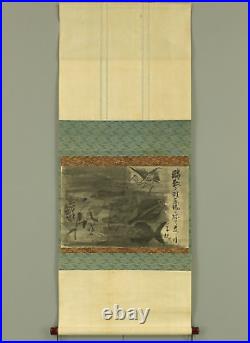


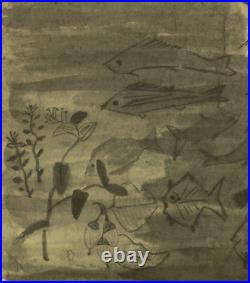

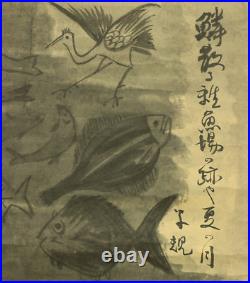

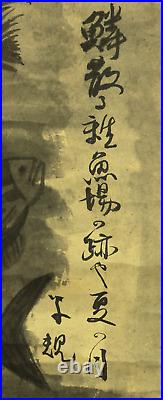

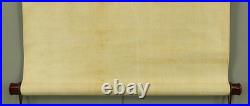


We hope you will understand. Please take care of yourself and stay safe. Always thank you so much. Reiwa Antiques and Collectibles. Please note that there might be a delay to deliver items all over the world because of pandemic. Art kakejiku kakemono wall hanging scroll. Haiku poet and poet of the Meiji era. He is one of the most important literary figures of the Meiji era, and has had a profound influence on modern Japanese literature. Born in Matsuyama, Ehime Prefecture. He dropped out of the Department of Japanese Literature, Tokyo University. He became acquainted with???? Natsume Soseki at a university prep school. In 1885, he began to write haiku and tanka. He had his first hemoptysis in August. In 1892, he joined the Nihon Shinbun (Japanese newspaper), and started a movement for haiku innovation in the paper. He wrote “Haiku poet Buson”, in which he rediscovered the charm of the Edo haiku poet???? From 1895 onward, he was ill in bed, and his haiku activities centered on “Hototogisu” which was first published in 1897. He was an innovator in tanka poetry and advocated sketch haiku and sketch writing. He took the name?? Shiki after the Hototogisu, which is commonly said to sing until it coughs up blood. Uroko chiru zakoba no ato ya natsu no tsuki. Many fish scales are fallen after the market has done. I can see the moon of summer in the quiet place now. X 45 H / 50.9cm x 114.4cm. Painting size : 17.1″ W x 11″ H / 43.5cm x 27.9cm. Weight : 490g including Box. Antique items have originally crease, stain, damage, and more. I would like you to refer to the listing photos, but please understand that it’s difficult to show all conditions by the photos. STAIN, CREASE, FOLD, STAIN in the back of the mounting. About colors of the photos. The color of the actual item may look different from the picture because of the lighting. The color on a photo can differ because of light, screen settings, personal color perception, etc. Please understand that we can’t control the varying light in different environments. Please read the description, check actual photos, and ask questions if doubts in advance. You can return item in 60 days after receiving an item. I accept free return. International Buyers – Please Note. From 1 July 2021, all commercial goods imported into the EU from a third country or third territory is subject to VAT irrespective of their value. I hope your understanding. Please be assured that we’ll do our best to deliver your items safely. Please don’t hesitate to let me know if you have any questions. This item is in the category “Antiques\Asian Antiques\Japan\Paintings & Scrolls”. The seller is “reiwa-antique-collectible” and is located in this country: JP. This item can be shipped worldwide.
- Roller ends: Wood
- Region of Origin: Japan
- Technique: Hand painted
- Type: Paintings, Scrolls & Prints
- Age: 1850-1899
- Primary Material: Paper
- Featured Refinements: Japanese Hanging Scroll
- Whole Size: 20\
- Painting size: 17.1\
- Weight: 490g including Box
- Signature & Seal: 子規 Shiki
- Artist’s detail: 1867~1902, Haiku poet, author, & literary critic
